#harvey firestone
Explore tagged Tumblr posts
Text

1932 Murphy Bodied Lincoln Roadster
This iconic photo shows the 1932 Murphy Bodied Lincoln Roadster that was the Indianapolis 500 pace car. From left to right are Eddie Rickenbacker, Henry Ford, Edsel Ford, Harvey Firestone Jr., Henry Ford ll seated high, Benson Ford, and Harvey Firestone.
#Murphy Bodied Lincoln Roadster#Murphy Bodied Lincoln#Lincoln#car#cars#Indianapolis 500 pace car#indianapolis 500#Eddie Rickenbacker#henry ford#Harvey Firestone Jr#Henry Ford ll#Benson Ford#Harvey Firestone#ford#edsel ford
25 notes
·
View notes
Text
What We Do In The Shadows Recap: We Circle Back Instead of Circle The Drain in "The Campaign"
In episode 5x4 of What We Do In The Shadows episode titled "The Campaign", Colin finds love, Nandor finds a friend and Nadja finds a family. Spoiler alert: only one of these proves sustainable.
Recap We’re in the nerve center. Colin Robinson (Mark Proksch) is running for comptroller on account of Sean (Anthony Atamanuik) possessing over nine DUIs. While Colin’s psyched, Nandor (Kayvan Novak) is struggling to find a workout buddy. Guillermo (Harvey Guillén) has been avoiding his master like the plague, so the Relentless attempts to make a friend in fellow gym rat Alexander (Robert…
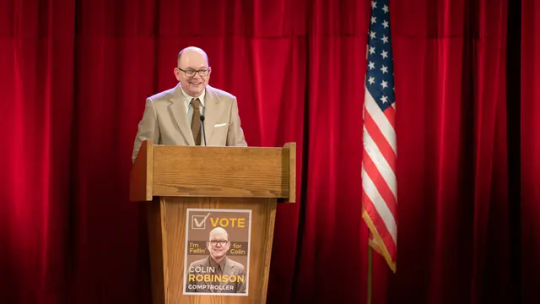
View On WordPress
#anthony atamanuik#Aparna Nancherla#FX#Gregg Turkington#Hannibal Buress#Harvey Guillen#Jo Firestone#Kayvan Novak#Mark Proksch#Martha Kelly#Matt Berry#Natasia Demetriou#Robert Smigel#Vanessa Bayer#What We Do in The Shadows
2 notes
·
View notes
Text
„Das Geheimnis meines Erfolges ist eine Antwort mit drei Wörtern: Verstehe die Menschen!“
Harvey Samuel Firestone
#witze#wmlz#meme#zitate#lustiges#humor#funny#lol#funny memes#deutsch#Geheimnis#Erfolg#Harvey Samuel Firestone
0 notes
Text
I like to think Osvald was a “Live, Laugh, Love” dad before his wife got murdered tbh. Just sends Harvey the Solistian version of cheesy work memes
And the prison time and murder just did this to Osvald

#Osvald’s second worst crime in Harvey’s eyes is being happy#Harvey would have used one less firestone if Osvald hadn’t sent so many work memes that he had to fake laugh at#Harvey so funny as a character because he just essentially exists to make Osvald’s life worse#just comical levels of evil considering some of the other antagonists like Partitio’s and Throné’s#the former being a capitalist getting a train gundam and the latter just being fairly multi-faceted (Father)#other guy? a bit more comically evil but not Harvey’s level
0 notes
Text
Indycar crash course
(For this all I’m just going to use 2024 as an example)
I hope this is helpful feel free to ask any questions!!
1. Teams/drivers
* There is no limit on how few or many drivers can race for a single team.
* Most teams have 3 cars but some have as low as 2 and others have as high as 5
* Drivers don’t have numbers, the cars/teams do (ex: David is car #66 but will change to #41 when he changes to Aj Foyt racing)
* Additional Teams/drivers will come in for the Indy 500
2. Circuits
* circuit types – from road and street circuits to short ovals (one mile or less) and long ovals, often referred to as superspeedways.
* From what I have seen most Indycar drivers like/prefer ovals
3. Chassis and engines
* Dallara is the exclusive chassis supplier for INDYCAR. The chassis is made of carbon fibre, Kevlar and other composites, and weighs approximately 770 kg.
* Chevrolet and Honda are the two engine manufactures in the series and supply competitors
4. Tyres
* Like Formula 1, INDYCAR has a sole tyre supplier. But instead of Pirelli rubber, INDYCAR uses Firestone.
* Firestone provides three types of tyres for road and street courses, and one for ovals. On road and street courses, there is the ‘primary’ black tyre. The ‘alternate’ red tyre is a softer compound that allows for higher speeds but wears faster. A grey sidewall tyre is used in wet weather conditions.
* On ovals, only the ‘primary’ black tyre is used and if the rain falls at this type of circuit, Indy cars will not take to the track.
5. Aeroscreen
* In Formula 1, the teams have the halo. In INDYCAR, the aeroscreen is a ballistic, canopy-like windscreen anchored by titanium framework surrounding the cockpit.
6. Race weekend format
* The format of race weekends changes from race to race, however the most common is that Friday consists of two practice sessions – one in the morning and one in the afternoon.
* On Saturday, there is a morning practice session followed by qualifying in the afternoon.
* Sunday is race day and it begins with a warm-up session at road and street courses. However, on oval circuits there is no warm-up session.
7. Pit Stops
* Unlike Formula 1 where 16 team members assist during a pit-stop, just seven members of each INDYCAR team are permitted go ‘over the wall’ to execute a pit-stop.
* Team members include: four tyre changers, a fueler, a person responsible for the air jack (to raise the car to change the tyres) and an aeroscreen assistant to clean or pull a ‘tear-off’ from screen to help the driver’s vision.
* Each crew member is required wear a firesuit and helmet for protection.
* Indy cars refuel at each stop and drivers pit depending on the length of the track. In the 10 seconds it takes to fuel the car, all four tyres are changed.
8. Point scoring
* Points are awarded for all finishing positions in INDYCAR.
* First – 50 points, second – 40, third – 35, fourth – 32, fifth – 30, sixth – 28, and so on, going down to just five points for the lowest finishing position in the field.
* Bonus points are awarded for: pole position – 1 point, leading at least one race lap – 1 point, and most race laps led – 2 points.
* For the Indianapolis 500 and the final race of the season, points are doubled in those races.
TEAMS (as of end 2024 season)
1. AJ Foyt Racing
* 14 Santino Ferrucci
* 41 Sting Ray Robb
2. Andretti Global
* 26 Colton Herta
* 27 Kyle Kirkwood (logan’s friend !!)
* 28 Marcus Ericsson
3. Arrow McLaren
* 5 Pato O’Ward (McLaren reserve driver)
* 7 Alex Rossi
* 6 Nolan Siegel
4. Chip Ganassi Racing
* 8 Linus Lundqvist
* 9 Scott Dixon
* 10 Álex Paluo Montalbo
* 4 Kyffin Simpson
5. Dale Coyne Racing
* 51 Katherine Legge
* 18 Jack Harvey
6. Ed Carpenter Racing
* 20 Christian Rasmussen
* 20 Ed Carpenter (ovals only)
* 21 Rinus Veekay
7. Juncos Hollinger Racing
* 77 Romain Grosjean
* 78 Conor Daly
8. Meyer Shank Racing
* 66 David Malukas
* 60 Felix Rosenqvist
9. Rahal Letterman Lanigan Racing
* 15 Graham Rahal
* 45 Christian Lundgaard
* 30 Pietro Fittipaldi
10. Team Penske
* 2 Josef Newgarden
* 3 Scott McLaughlin (twt icon)
#indycar#indy 500#f1#formula 1#logan sargeant#ls2#david malukas#pato o'ward#kyle kirkwood#josef newgarden#arrow mclaren#mclaren
585 notes
·
View notes
Text
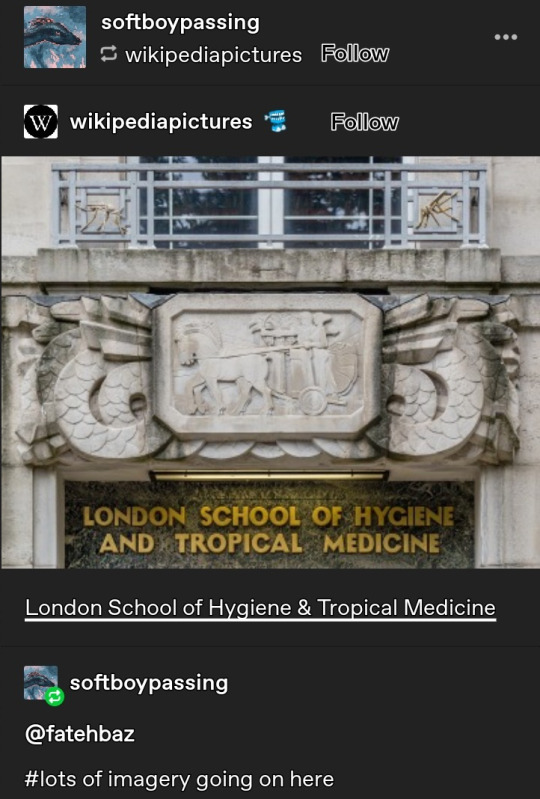
"defending civilization against bugs"
lol the mosquito sculpture
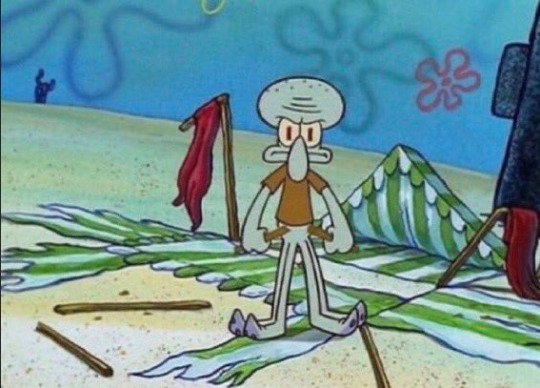
see Pratik Chakrabarti's Medicine and Empire: 1600-1960 (2013) and Bacteriology in British India: Laboratory Medicine and the Tropics (2012)
---
Sir Ronald Ross had just returned from an expedition to Sierra Leone. The British doctor had been leading efforts to tackle the malaria that so often killed English colonists in the country, and in December 1899 he gave a lecture to the Liverpool Chamber of Commerce [...]. [H]e argued that "in the coming century, the success of imperialism will depend largely upon success with the microscope."
Text by: Rohan Deb Roy. "Decolonise science - time to end another imperial era." The Conversation. 5 April 2018.
---
---
---
[A]s [...] Diane Nelson explains: The creation of transportation infrastructure such as canals and railroads, the deployment of armies, and the clearing of ground to plant tropical products all had to confront [...] microbial resistance. The French, British, and US raced to find a cure for malaria [...]. One French colonial official complained in 1908: “fever and dysentery are the ‘generals’ that defend hot countries against our incursions and prevent us from replacing the aborigines that we have to make use of.” [...] [T]ropical medicine was assigned the role of a “counterinsurgent field.” [...] [T]he discovery of mosquitoes as malaria and yellow fever carriers reawakened long-cherished plans such as the construction of the Panama Canal (1904-1914) [...]. In 1916, the director of the US Bureau of Entomology and longtime general secretary of the American Association for the Advancement of Science rejoiced at this success as “an object lesson for the sanitarians of the world” - it demonstrated “that it is possible for the white race to live healthfully in the tropics.” [...] The [...] measures to combat dangerous diseases always had the collateral benefit of social pacification. In 1918, [G.V.], president of the Rockefeller Foundation, candidly declared: “For purposes of placating primitive and suspicious peoples, medicine has some decided advantages over machine guns." The construction of the Panama Canal [...] advanced the military expansion of the United States in the Caribbean. The US occupation of the Canal Zone had already brought racist Jim Crow laws [to Panama] [...]. Besides the [...] expansion of vice squads and prophylaxis stations, during the night women were picked up all over the city [by US authorities] and forcibly tested for [...] diseases [...] [and] they were detained in something between a prison and hospital for up to six months [...] [as] women in Panama were becoming objects of surveillance [...].
Text by: Fahim Amir. "Cloudy Swords." e-flux Journal Issue #115. February 2021.
---
---
---
Richard P. Strong [had been] recently appointed director of Harvard’s new Department of Tropical Medicine [...]. In 1914 [the same year of the Panama Canal's completion], just one year after the creation of Harvard’s Department of Tropical Medicine, Strong took on an additional assignment that cemented the ties between his department and American business interests abroad. As newly appointed director of the Laboratories of the Hospitals and of Research Work of United Fruit Company, he set sail in July 1914 to United Fruit plantations in Cuba, Guatemala, Honduras, Costa Rica, and Panama. […] As a shareholder in two British rubber plantations, [...] Strong approached Harvey Firestone, chief executive of the tire and rubber-processing conglomerate that bore his name, in December 1925 with a proposal [...]. Firestone had negotiated tentative agreements in 1925 with the Liberian government for [...] a 99-year concession to optionally lease up to a million acres of Liberian land for rubber plantations. [...]
[I]nfluenced by the recommendations and financial backing of Harvard alumni such as Philippine governor Gen. William Cameron Forbes [the Philippines were under US military occupation] and patrons such as Edward Atkins, who were making their wealth in the banana and sugarcane industries, Harvard hired Strong, then head of the Philippine Bureau of Science’s Biological Laboratory [where he fatally infected unknowing test subject prisoners with bubonic plague], and personal physician to Forbes, to establish the second Department of Tropical Medicine in the United States [...]. Strong and Forbes both left Manila [Philippines] for Boston in 1913. [...] Forbes [US military governor of occupied Philippines] became an overseer to Harvard University and a director of United Fruit Company, the agricultural products marketing conglomerate best known for its extensive holdings of banana plantations throughout Central America. […] In 1912 United Fruit controlled over 300,000 acres of land in the tropics [...] and a ready supply of [...] samples taken from the company’s hospitals and surrounding plantations, Strong boasted that no “tropical school of medicine in the world … had such an asset. [...] It is something of a victory [...]. We could not for a million dollars procure such advantages.” Over the next two decades, he established a research funding model reliant on the medical and biological services the Harvard department could provide US-based multinational firms in enhancing their overseas production and trade in coffee, bananas, rubber, oil, and other tropical commodities [...] as they transformed landscapes across the globe.
Text by: Gregg Mitman. "Forgotten Paths of Empire: Ecology, Disease, and Commerce in the Making of Liberia's Plantation Economy." Environmental History, Volume 22, Number 1. January 2017. [Text within brackets added by me for clarity and context.]
---
---
---
[On] February 20, 1915, [...] [t]o signal the opening of the Panama-Pacific International Exposition (PPIE), [...] [t]he fair did not officially commence [...] until President Wilson [...] pressed a golden key linked to an aerial tower [...] whose radio waves sparked the top of the Tower of Jewels, tripped a galvanometer, [...] swinging open the doors of the Palace of Machinery, where a massive diesel engine started to rotate. [...] [W]ith lavish festivities [...] nineteen million people has passed through the PPIE's turnstiles. [...] As one of the many promotional pamphlets declared, "California marks the limit of the geographical progress of civilization. For unnumbered centuries the course of empire has been steadily to the west." [...] One subject that received an enormous amount of time and space was [...] the areas of race betterment and tropical medicine. Indeed, the fair's official poster, the "Thirteenth Labor of Hercules," [the construction of the Panama Canal] symbolized the intertwined significance of these two concerns [...]. [I]n the 1910s public health and eugenics crusaders alike moved with little or no friction between [...] [calls] for classification of human intelligence, for immigration restriction, for the promotion of the sterilization and segregation of the "unfit," [...]. It was during this [...] moment, [...] that California's burgeoning eugenicist movement coalesced [...]. At meetings convened during the PPIE, a heterogenous group of sanitary experts, [...] medical superintendents, psychologists, [...] and anthropologists established a social network that would influence eugenics on the national level in the years to come. [...]
In his address titled "The Physician as Pioneer," the president-elect of the American Academy of Medicine, Dr. Woods Hutchinson, credited the colonization of the Mississippi Valley to the discovery of quinine [...] and then told his audience that for progress to proceed apace in the current "age of the insect," the stringent sanitary regime imposed and perfected by Gorgas in the Canal Zone was the sine qua non. [...]
Blue also took part in the conference of the American Society for Tropical Medicine, which Gorgas had cofounded five years after the annexation of Cuba, Puerto Rico, and the Philippines. Invoking the narrative of medico-military conquest [...], [t]he scientific skill of the United States was also touted at the Pan-American Medical Congress, where its president, Dr. Charles L. Reed, delivered a lengthy address praising the hemispheric security ensured by the 1823 Monroe Doctrine and "the combined genius of American medical scientists [...]" in quelling tropical diseases, above all yellow fever, in the Canal Zone. [...] [A]s Reed's lecture ultimately disclosed, his understanding of Pan-American medical progress was based [...] on the enlightened effects of "Aryan blood" in American lands. [...] [T]he week after the PPIE ended, Pierce was ordered to Laredo, Texas, to investigate several incidents of typhus fever on the border [...]. Pierce was instrumental in fusing tropical medicine and race betterment [...] guided by more than a decade of experience in [...] sanitation in Panama [...]. [I]n August 1915, Stanford's chancellor, David Starr Jordan [...] and Pierce were the guests of honor at a luncheon hosted by the Race Betterment Foundation. [...] [At the PPIE] [t]he Race Betterment booth [...] exhibit [...] won a bronze medal for "illustrating evidences and causes of race degeneration and methods and agencies of race betterment," [and] made eugenics a daily feature of the PPIE. [...] [T]he American Genetics Association's Eugenics Section convened [...] [and] talks were delivered on the intersection of eugenics and sociology, [...] the need for broadened sterilization laws, and the medical inspection of immigrants [...]. Moreover, the PPIE fostered the cross-fertilization of tropical medicine and race betterment at a critical moment of transition in modern medicine in American society.
Text by: Alexandra Minna Stern. Eugenic Nation: Faults and Frontiers of Better Breeding in Modern America. Second Edition. 2016.
#literally that post i made earlier today about frustration of seeing the same colonial institutions and leaders showing up in every story#about plantations and forced labor my first draft i explicitly mentioned the harvard school tropical medicine and kew royal botanic garden#abolition#ecology#imperial#colonial#bugs#indigenous#multispecies#civilization vs bugs
261 notes
·
View notes
Text
michigan cherry // part eight




summary: walking into a saloon in a nowhere town, billy meets a singer who he just can't get off his mind after she slips through his fingers; onto another town, another show- following nothing but the stars in her path. until he sees her again. another nowhere town and equally dusty saloon, but this time, the band of kids who made up her family is nowhere to be found. he's running away from something, and she is storming full speed toward something else, and tangling into each other's lives may just get both of them exactly where they want to be.
pairing: william h. bonney x fem!reader
wc: 2.3k
masterlists / nav / requests
tags/warnings: singer!reader (she’s giving very much lucy gray), probably a little bit ooc billy but hey i tried- anyway he’s a sweetheart, use of guns and violence, murder and violence but i try to keep it non-descript, oh also she’s an orphan sorry (once again, lucy gray vibes), strangers to friends to lovers trope eee. also not thoroughly proofread oops
the songs in this chapter are: "The Old Therebefore (Acapella)" by Rachel Zegler, and "Suneater" by Leanna Firestone !!
a/n: its been soo long ah! i'm sorry! i've been BOOKED (what's new) anyways hopefully i can sort my shit out bc i love this story sm. also i didn't edit this bc at least i wrote it yk.
my asks are also open to talk about this series! (i do have emoji anons open now too!)
send me any and all of your thoughts! here!
series masterlist // pinterest board // playlist

The chill from the sheer stress of staring down the barrel of a gun makes the transition back into the howling winds that much easier. Staring back at the barn with the doors now being forced closed from the inside, you let Billy drag you away, and you're not even meaning to make it difficult by nearly stumbling with every step. He seems empathetic to your cause, not letting it affect the process of trying to get you somewhere safe.
Options were limited, more so now than before. Part of him wants to break down the front door of the house your little brother occupies and shove you and your precious guitar under a bed and hope it's enough, but with the way the walls are rocking in the wind as it was with the twister still a ways off, surviving long enough to have to claw you out from under the debris of a collapsed house certainly sounds like a daunting task.
Okay, new plan. Away from the house. Far away.
Behind the house, there's a series of rolling hills that expand in nearly every direction. Billy doesn't know much about surviving a tornado, but if he could just get you far enough out into this open field, the odds of it passing by so close to cause any harm were slimmer, right? It's not like cyclones could track or follow body heat- as far as he knew anyway, but right now it sure felt like it did. It was probably still miles away, but he couldn't hear past the racing winds.
You don't even say anything. You can't, even has the house and it's barn where Harvey is hopefully safe and sound disappear quickly from your view; thanks to the gray cloak of rain soaking your show dress and the notebook in your hand.
There's a flash in the cool darkness that the late afternoon turned into, a bright light tinted almost blue that you don't process even happened until it was gone. It's the following bout of thunder that startles you after, jolting you closer to Billy's side.
On what must be gut instinct alone he drops your hand to throw his arm around your back, more so pushing you now rather than pulling.
There's no viable destination, surrounded only by long grass whipping in the wind in a similar way to your hair, and rolling hills.
That'll have to do, Billy thinks, pushing you as gently as he can down into the little valley and shouting over the wind with his hand firmly on your back. "Lay down!"
"Huh?!" You snap out of your daze, through the storm to look at him.
"Lay down!" He repeats himself, pulling you down onto the ground with him and you tumble into the wet grass. He lands on top of you, legs tangled together and weighed down by your guitar case on his back which you're damn sure just knocked him hard in the back of the head.
His elbows are braced on either side of your head, and for a moment you get a chance to breathe without being drowned by the heavy rainfall. Nose to nose, you could feel Billy's warm breaths on your face, and you can tell he's feeling as relieved as you are even though he's the one being poured on right now- his eyes closed tight and chest heaving against yours.
God have mercy.
You have to close your eyes again to try and keep it together. You were upset with him, you know you were- but the reason is a long lost mystery right now with him laying on top of you in a ditch, trying possibly in vain to protect you from this dreadful storm.
You don't know how long your eyes are pinched shut before you feel his cold hand on your face, pushing your wet hair away from where it was clinging to your skin. "Are you okay?" He asks, and you can certainly hear him being so close.
You nod, leaning your cheek into his palm as he rests it against your cheek, brows furrowed in concentration and worry as he strokes your face with his thumb. "Fine." You answer, finding it hard still to catch your breath.
Unsure what else to do, you wrap your arms around his waist and hold on while he keeps the wind out of your face.
"We just gotta wait it out." He huffs, lifting his head slightly to look around, but it's impossible to see a damn single thing.
Having him so close erases any fear of being sucked away and thrown off miles high by this tornado, and your heart is beating fast- indiscernable from adrenaline or just... him.
With your eyes squeezed shut again, he can't tell if you really are okay, if you're panicking, and the raindrops soaking your skin make it hard to tell if you're crying.
"You're headed for heaven, sweet old hereafter..."
You open your eyes again when you hear him singing one of your own songs, your eyes coloured thoroughly with misunderstanding. It doesn't last long when he keeps going, the low tones of his voice bringing in recognition and even the beginnings of a smile that makes him feel comfortable with his decision to try and cheer you up.
"And I've got one foot in the door..."
Billy nudges your cheek gently with his knuckle, the playful smile on his lips prompting you to join in.
"But before I can fly up, I've loose ends to tie up, right here in the old therebefore."
You sing along with him this time, and gradually, line by line, you're getting louder and smiling ear to ear. Somewhere along the line you'd lost him, but that had never mattered to you. He didn't know all the words but he knew enough.
"When I'm pure like a dove, when I've learned how to love-"
He cuts you off abruptly, and you're surrounded by an unreal warmth laying on the cold ground as he kisses you like his life depended on it. Like he had been waiting his entire life for this, and right now, he's sure he was. If he was swept away by this tornado in a matter of seconds his only regret would be that he didn't get to kiss you more.
Your lips are cold, cheeks wet as his skin slides over yours and you can feel him breathing you in, heart and soul in their entirety. You were terrified before of losing another good thing, even though you had known from the moment you laid your eyes on him that this is what you had wanted.
"For someone who sings like an angel," He murmurs into your lips, pulling away just enough to get the words out and you can feel the slight curve of a smile there to match your own, "You sure do taste sweet as sin."
You had spent another week rolling around the hills of Crystal City, holding onto each other as tight as you had during the storm that blew you back together in the first place. The outside world, as far as the two of you were concerned, ceased to exist after you helped with a few repairs here and there, steering clear of the Booker's and their home.
"So," Billy grins, arms snaking around your waist from behind in the chilly water, pulling you back and close to his chest. "You write that song about me, sunshine?"
You're nearly shivering, but your cheeks still heat up as you drop your head back against his shoulder. "What song?" You ask, trying to fight the smile on your face as you scrub the water over your bare arms in some attempt to get clean.
He nudges his nose into your temple. "Any of 'em."
"One or two." You admit. "But to get this straight, you're confessing to reading my journal?"
"My mistake, I thought it was public art I was appreciating." You can feel him smirk against the damp skin of your cheek.
"So public you waited until it was unattended to read it without asking, huh?"
He shrugs, thumbing the incredibly soft skin on either side of your stomach. "I needed to really... soak it in, y'know? That depth of beauty needs its solitude to be loved correctly." He mumbles into your hair. "Like you."
You roll your eyes, turning and slipping out of his grip only to splash him, your free hand coming up to cover your chest under the summer sun. It's a beautiful day, a perfect day, even. "I'll sing you a new one tomorrow." You tell him, but he's quickly distracted.
"Hey, none of that!" He laughs, lifting his hand up to block the spray of creek water from his face.
He takes a swift step closer, the minor wave helping you back up faster away and Billy believes he's never seen anything brighter than that precious smile of yours.
"None of what?" You giggle, and with another quick movement he's grabbing your arms to free you up to his gaze again. Instead of fighting him on it though, you grab onto his wrists and fall limp backwards, dragging him into the shallow water with you which he wouldn't dare to resist.
The next night, the saloon was up and running again and oh, how it was a good night for a show. The air was buzzing with everyone being eager to forget their troubles- both perpetual or caused by the storm.
It's crowded, and your guitar case is to be the vessel of many a tip tossed from the hands of drunk men who were feeling particularly lucky in poker.
You could smell it in the air, tonight would be good.
You step up onto the stage after downing a warm shot of honey, grabbing your guitar and picking at it mindlessly to grab the attention of anyone who intended to listen. That number has greatly increased over the last few months, your name was being passed around like a bottle of strong whiskey in a friendly crowd. So, Billy watches as people quiet down, his eyes returning to you from his seat at a poker table where he was attempting to win something decent to contribute to your savings.
"Hope everyone's havin' a good night so far." You grin, forcing your gaze to scan the crowd instead of remaining anchored to Billy in the corner. "I figure it's likely everyone needs some cheerin' up, that was one hell of a tempest, wasn't it?"
There's some shouts of agreement, some confused mumbles at the term. Your smile splits your face and you nod. "Hey, but we're all here, ain't we? We should count that a blessing. And the sun is back, bigger and brighter than ever."
Your eyes meet Billy's again and you can just see the slight curve of his lips in one corner- he simply couldn't not smile like an idiot in your presence.
"That being said, this song is called Suneater."
The introduction earns you some laughs as you begin the first few chords, glancing down at the journal on the floor next to you to refresh your memory before you started singing.
"Angels danced the day that you were born, Oh, I'm so sure they celebrated when you arrived. You're so bright, I swear, you swallowed the sun And I am so in awe, just basking in your light."
The way you were looking at Billy every couple seconds is the only viable indicator that you wrote this about him, because surely, he was the farthest thing from a bask-able light. On top of that, he hadn't read it in your journal a few weeks earlier when he was feeling forgivably nosey. But you had written it this week, and it was possibly the fastest any song had ever come together from the very forefront of your mind.
"But I am just the one who swallowed the moon The only light that I have's just a reflection of you. You're the sea of tranquillity, You're all of my stars, You're Neptune and Saturn, You're Venus and Mars, And I see the whole galaxy in your eyes."
Billy sits back and crosses his arms, his cards clutched tight to his chest as he shakes his head a little at you and your horrible misinterpretation of who is who in this unofficial and heavenly relationship. You can still see him smiling though, knowing he couldn't flip this on you while you were performing.
"And I long to tell you But I think it'll only make you shy. You got the heart of a Leo. But you're sweet like a Pisces, And the only thing I know is I think I might be falling for The boy who swallowed the sun."
He draws a few eyes followed by your own loving gaze, and he shrinks back a little in his seat, lowering his hat just a bit. For reasons obvious to him, he didn't love having eyes on him.
Your smile just grows, assuming you had been right about your assumption mentioned in the song that it would make him shy. To be fair, you are too. As much as you openly cared for one another, you both were yet in the week after your kiss to share a single word and genuine as these. A confession. A real I love you.
"I will keep the tides in tune if you will make the flowers bloom And gravity will do the rest and pull me back to you. Just like Hades and Persephone, The boy who ate the sun and me, You have brought sunshine to the dark side of the moon."
As the bar continued to be mostly entranced by your melodious serenade, you're slightly distracted. You had looked away from Billy for no more than a few seconds to maintain a better stage presence, when you see him stand out of the corner of your eye. Stand, head down and walk between chairs and tables, past the bar, and out the back door, your eyes following the whole way as your smile steadily faded which each step he took away during your love song.
You feel your heart crack in your chest, but the show must go on.

no taglist this time around!! my fics usually get over a hundred requests to be added to the taglist so instead i made a library! follow me over on @runningfrom2am-library and turn on notifs to get updates when i post new parts!!
#michigan cherry !#billy the kid x reader#billy the kid x you#billy the kid#billy the kid 2022#billy bonney#billy the kid imagines#billy the kid fanfiction#william bonney x you#william h bonney x you#william h bonney x reader#william bonney x reader#william bonney#tom blyth fic#tom blyth x reader#tom blyth
43 notes
·
View notes
Text

(De izquierda a derecha) Herbert Hoover, Henry Ford, Thomas Edison y Harvey Firestone en Fort Myers, Florida, 11 de febrero de 1929. El grupo estuvo allí para ayudar a celebrar el cumpleaños número 82 de Edison. Mientras estuvo allí, Edison hizo una aparición en la radio
11 notes
·
View notes
Text
Another America: The Story of Liberia and the Former Slaves Who Ruled It

Another America: The Story of Liberia and the Former Slaves Who Ruled It
In 1820, a small group of African Americans reversed the course of history and sailed to Africa, to a place they would name after liberty itself. They went under the aegis of the American Colonization Society, a white philanthropic organization with a dual agenda: to rid America of its blacks and to evangelize Africa. The settlers, eventually numbering in the thousands, broke free from the ACS, and, in 1847, establish the Republic of Liberia. James Ciment’s Another America is the first full account of this dramatic experiment. With empathy and a sharp eye for human foibles, Ciment reveals that the Americo-Liberians struggled to live up to their high ideals. They wrote a stirring Declaration of Independence but re-created the social order of antebellum Dixie, with themselves as the master caste. Building plantations, holding elegant soirees, and exploiting and even helping enslave the native Liberians, the persecuted became the persecutors—until a lowly native sergeant murdered their president in 1980, ending 133 years of Americo rule. The rich cast of characters in Another America rivals that of any novel. We encounter Marcus Garvey, who coaxed his followers toward Liberia in the 1920s, and the rubber king Harvey Firestone, who built his empire on the backs of native Liberians. Among the Americoes themselves, we meet the brilliant intellectual Edward Blyden, one of the first black nationalists; the Baltimore-born explorer Benjamin Anderson, seeking a legendary city of gold in the Liberian hinterland; and President William Tubman, a descendant of Georgia slaves, whose economic policies brought Cadillacs to the streets of Monrovia, the Liberian capital. And then there are the natives, men like Joseph Samson, who was adopted by a prominent Americo family and later presided over the execution of his foster father during the 1980 coup. In making Liberia, the Americoes transplanted the virtues and vices of their country of birth. The inspiring and troubled history they created is, to a remarkable degree, the mirror image of our own.
3 notes
·
View notes
Text


Your Garden Will Finally Grow (And I Needed You To Know) - A Terra Harvey Playlist
October Passed Me By - Girl In Red Good Girls (Don’t Get Used) by Beach Bunny I Miss The Closet - Eva Westphal Alone Forever Probably - Leanna Firestone Ivy - Taylor Swift Garden - Meet Me At The Altar I'm Not Sure by Margaux Beylier Fat Funny Friend - Maddie Zahm
#terra harvey#terraharveyedit#fate the winx saga#fate: the winx saga#fatethewinxsagaedit#ftwsedit#ftws#*mine#*mine: playlist#*mine: graphics
10 notes
·
View notes
Photo

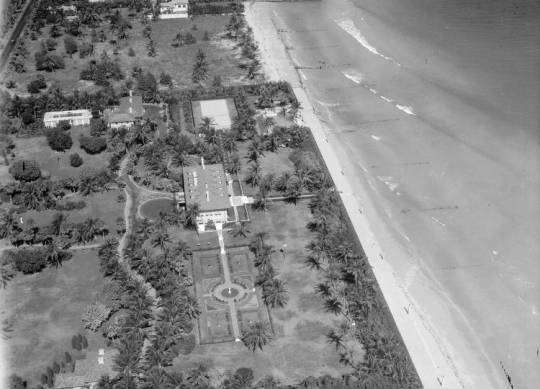

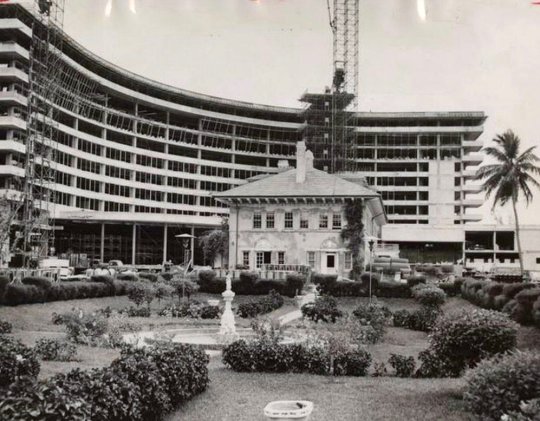
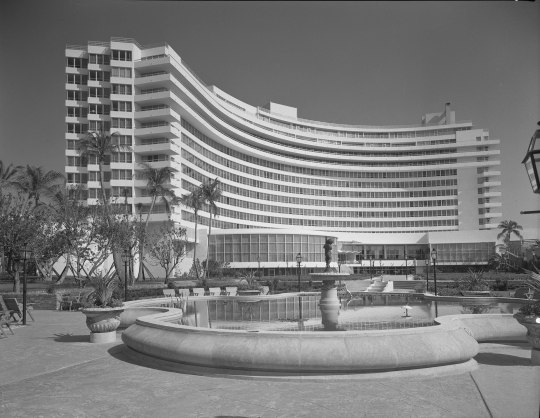
Miami Beach
Snowden Estate, 1923, looking north from 44th St & Collins Ave. Harvey S. Firestone's Harbel Villa Estate, 1930s. Fontainebleau Hotel construction, 1954. Firestone estate was used as a construction office.
Miami History / SMU Libraries / Miami Archives / Gottscho-Schleisner collection, LOC
Fontainebleau architect Morris Lapidus: In his day, critics reviled the excesses of Lapidus’ designs, calling his architecture “the nation’s grossest national product,” “pornography of architecture,” and “boarding house baroque” ... There was a “Staircase to Nowhere” so women dressed in couture and jewels could take an elevator to the top to deposit their coats and glamorously descend the stairs to the lobby. - Fontainebleau Hotel, A Colorful History
Steve Wynn:
In 1954 a guy named Ben Novack and his brother Joe Novack, who had experience in the Catskills at a hotel called Laurel, and in Miami Beach at the Sans Souci Hotel - sort of like Las Vegas with bunch of hotels lined up one next to the other on Collins Avenue - got an option on the Firestone estate at 41st St. on Collins Ave., a big 15-acre oceanfront piece that was owned by the famous family that made tires.
Ben Novack and Joe Novack conceived with an architect named Morris Lapidus of a hotel called Fontainebleau. This place was going to be a new idea. The hotel itself was going to be a series of experiential moments that included formal French gardens, sort of a Jewish version of Versailles; a gorgeous, soaring, high ceiling lobby; a lot of curvilinear spaces and curved stairways; murals on the wall of 18th century France; a fabulous showroom; a shopping arcade below; beyond the garden an expansive Cabana and pool club; a beautiful spa; and a curved building with blue glass. The Fontainebleau was going to set a new standard of destination resorts on planet Earth. It was so breakaway, so profoundly new it didn't even add a name on it. No sign, just the building.
It opened in 1954 and it changed everything people came from France, Italy, Germany, Mexico, Venezuela, Argentina, and Brazil. Between Christmas and Easter you had to know somebody to get a room. Everybody from Frank Sinatra and Johnny Mathis worked there. It was the coolest place to be in America during high season. The Fontainebleau dwarfed in scale and imagination anything that had ever been done anywhere in Europe or America, and it was received that way.
Jay Sarno was a character from Atlanta. He saw the Fontainebleau. He saw that this place was in the literary sense romantic, better than the outside world. It was a universe utopia within itself. Sarno never got over it
I was going to school at the University of Pennsylvania. My folks had Cabana 364 on an annual basis. I’d come there at Christmastime, and I never got over it. To me it seemed like the greatest thing in the world is to create a place that would transport people that way.
11 notes
·
View notes
Text

1956 Continental Mark II

1956 Continental Mark II

1956 Continental Mark II

1956 Continental Mark II
Half of the fun for me in restoring this 1956 Continental Mark II, is finding out more and more about the history of this specific vehicle and connecting the dots and putting all of the pieces of the puzzle together to get a pretty good picture of the owners and whereabouts of where these gems were from the factory to the streets from one owner to the next through different eras, right up to now as it sits in my driveway! For the longest time I was wondering why there was no purchase order for my Mark II, but after recently seeing a production order invoice for my car I can now see why! My specific vehicle was specially made for Leonard K. Firestone of the Firestone Tire and Rubber Company, Leonard was the son of the founder of Firestone, Harvey S. Firestone, the Firestone family were all very close to the Ford family, Leonard’s niece Martha who was the daughter of Harvey Jr. was married to William Clay Ford Jr. and for those of us “Continental Mark II enthusiasts” who have done our homework, we know that William Clay Ford Jr. was the “Ford” that was in charge of and led the way for the seperate Continental division of Ford that made the “Continental Mark II” in 1956 and a short run in 1957, and thus dropped the “Lincoln” from the title during this period, so basically the Ford’s and the Firestones were Family, which is why on all of the 1956-57 Continental Mark II’s they all came equipped with “Firestone Champion Deluxe” tires. Harvey Firestone who was Leonard Firestones Father often vacationed with Henry Ford and Thomas Edison and they referred to themselves as “The Vagabonds” and were recognized as the three leaders in American industry in that era. I find all of this very interesting and it makes it even more of a joy to be restoring a classic beauty with that much history involved with it. A production order two tone paint job made specifically for Leonard Kimball Firestone! I plan on restoring this vehicle back to its original condition and color scheme as much as possible, I love the two tone paint, from what I understand only 68 were ever produced with two tone paint jobs! And this is one of them!
50 notes
·
View notes
Text
Indycar Driver Lore
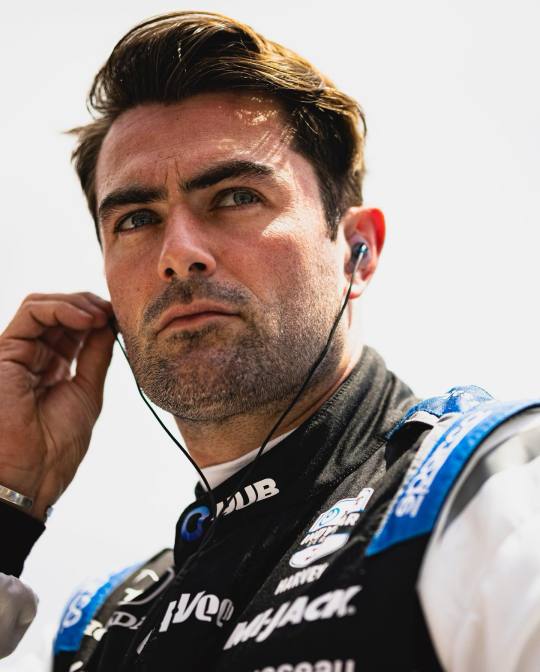
Indycar Driver Lore Masterlist
Jack Joseph Murray Harvey
Birthdate: April 15, 1993 Hometown: Bassingham, England Residence: Indianapolis Height/Weight: 5’10”/168lbs
Rookie Year: 2018
Team: Dale Coyne Racing
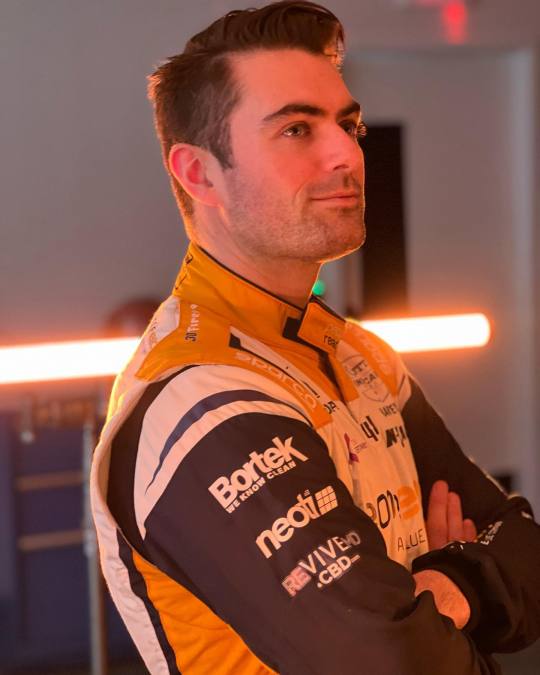
Follow him on: Instagram Twitter
Career Stats
2017 1 race w/ Michael Shank Racing w/Andretti Autosport, 2 races w/ Schmidt Peterson Motorsports - 28th Overall 2018 1 race w/ Michael Shank Racing w/ Schmidt Peterson Motorsports, 5 races w/Meyer Shank Racing w/Schmidt Peterson Motorsports - 24th Overall 2019 10 races w/Meyer Shank Racing w/Arrow Schmidt Peterson Motorsports - 21st Overall 2020 Meyer Shank Racing - 15th Overall 2021 Meyer Shank Racing - 13th Overall 2022 Rahal Letterman Lanigan Racing - 22nd Overall 2023 Rahal Letterman Lanigan Racing - 24th Overall (Fired with three races left)
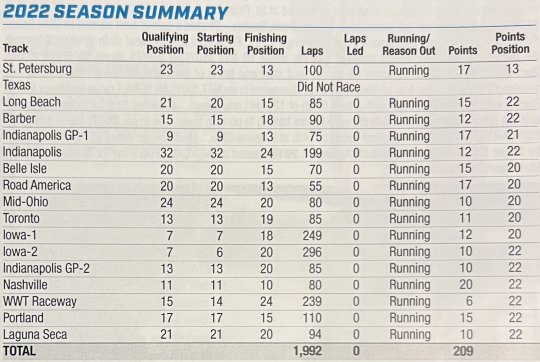
A two-time INDY NXT by Firestone championship runner-up,
Has lived in both the United States and France but has remained grounded in his sense of home – the small village of Bassingham in Lincolnshire, England.
Among the drivers who have won on both the oval and road courses at Indianapolis Motor Speedway, with wins on both circuits in 2015 while racing in INDY NXT.
Has 10 racing championship wins in his career, including the British Formula 3 title in 2012.
enjoys baking, target shooting, watching Star Wars and Marvel movies and watching soccer and American football.
has been roped into collecting baseball cards and star wars trading cards
-big star wars fan
-bakes, and is known to make very good cookies

Iconic/memorable moments
Jack Harvey Takes Flight with Red Bull Air Race Pilot Kirby Chambliss 2022 PACE CAR LAPS // GRAHAM RAHAL AND JACK HARVEY Christmas Questions with GRAHAM RAHAL and JACK HARVEY! GRAHAM RAHAL and JACK HARVEY Answer Thanksgiving Questions! HONDA PACE CAR // HELIO CASTRONEVES AND JACK HARVEY TRACK WALK WITH JACK HARVEY // FIRESTONE GRAND PRIX OF ST. PETERSBURG Jack Harvey reflects on the time he lived in the IMS president's basement Jack Harvey Explains His Dislike For IndyCar Silly Season IndyCar Driver Jack Harvey Joins Us at Indy 500 Media Day Who is Jack Harvey? Motorsport101 Interviews… IndyCar's Jack Harvey! Indycar driver Jack Harvey trains at gym to be race ready Jack Harvey, Max Chilton, and Simon Pagenaud go skeet shooting Jack Harvey snatches last spot in the Indianapolis 500 from teammate | Motorsports on NBC Doug and Drivers: Jack Harvey Almost Didn't Want To Race in America IndyCar driver Jack Harvey shows off his RV at IMS You Don't Know Jack! Playlist Go BTS with Jack Harvey at our Hy-Vee Commercial Shoot! Colton Herta & Jack Harvey Are Pumped For "Kenobi" | Indy 500 Happy Hour
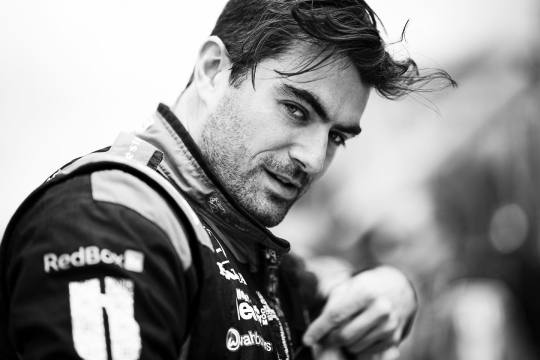
Sweet and kind, Jack often spends extra time interacting with fans at races. A huge Star Wars nerd, he was thrilled to meet Adam Driver when he was the honorary starter at the 2023 Indy 500. Jack loves baking, especially cookies.

Fanfic Lore
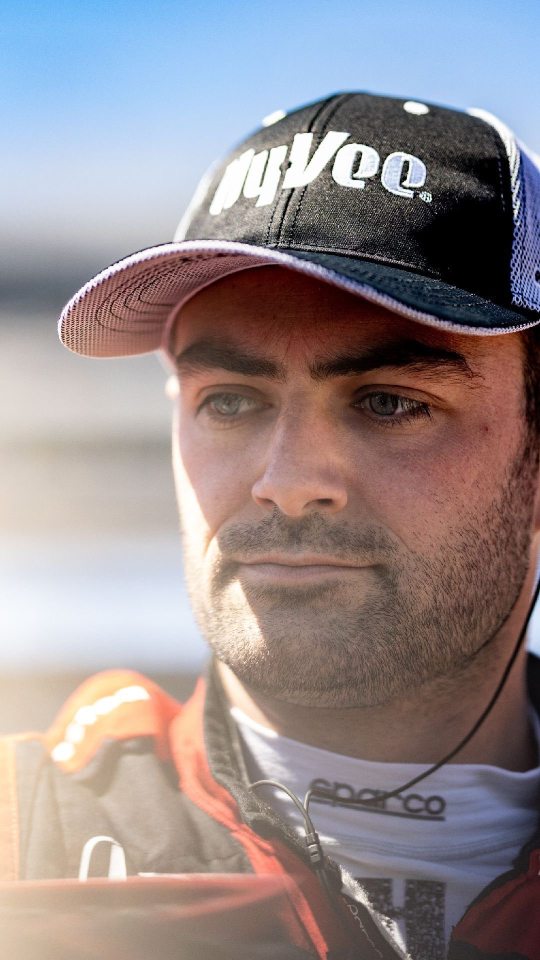
none
7 notes
·
View notes
Text
For almost two decades after it opened in 1913, Michigan’s Central Station was a major stop on the nation’s interurban rail network. Then the private car took over the US, and Detroit declined. By the 1970’s, auto jobs were leaving the state and the country and local corruption was soaring. At the turn of the century, the train depot and the 18-story office towers behind it had been abandoned for 30 years, the faded exterior looming over Detroit’s Corktown and Mexicantown neighborhoods, a sign that things were going very poorly in Detroit.
By 2018, the city and Ford Motor Company were ready to tell another story. That year, Ford announced that it had acquired the station and the area surrounding it, a monument to the kind of transportation past that the automaker and its manufacturing brethren had all but killed.
Today, Ford executives and city government and community leaders will hold an opening ceremony for one building on the station’s new campus, part of a $950 million project it is calling Michigan Central. (The state of Michigan contributed some additional $126 million in new and existing financing to the project.) The new building, called the Book Depository, will serve as an innovation collaboration space for transportation entrepreneurs and researchers.
Bill Ford, executive chair of Ford, says the campus’ redevelopment is a sign. “Michigan Central will go from being a story about Detroit’s decay to the story about Detroit’s rebirth,” he says, a second act that will see the city become home to tech- and auto-centric jobs that will build the next generation of transport. “This will be the first tangible evidence that that vision is coming to life,” says Ford, who is also a great-grandson of both company founder Henry Ford and tire magnate Harvey Firestone.
Ford is part of a broader movement to revitalize downtown Detroit, though its effects are not yet clear. Detroit lost almost half of its population between 1950 and 2000. Though new downtown sports stadiums, restaurants, and housing developments have strengthened the case of local optimists who see a resurgence underway, recent US censuses suggest that the region continued to bleed residents in the past decade, perhaps due in part to the Covid-19 pandemic. (The city has sued the US Census Bureau over the results, alleging that feds undercounted minority residents, which affects government funding.)
Ford expects many other businesses to move onto the 30-acre Michigan Central campus, which includes 14 acres of park space open to the public. Today’s opening focuses on the Book Depository, a nearly 100-year-old building across the street from the Central Station that once played host to the Detroit public schools’ store of books, records, and supplies. Now, it will serve as a 270,000-square-foot maker and startup space focused on mobility, a potential spawning ground for future Ford partners. Even before the building’s official opening today, more than 25 companies representing 150 employees have taken up residence at the Book Depository, Michigan Central officials say, representing firms working on autonomous and electric vehicles, roadways built just for robot cars, and air pollution. They are all associated with an organization called Newlab, a manufacturing incubator that has already launched an innovation space in Brooklyn’s Navy Yard.
The Book Depository’s space is designed to encourage collaboration, says Joshua Sirefman, who as CEO of Michigan Central has led the project’s development and programming. Although the building’s general structure has been preserved, changes have been made to bring it in line with contemporary expectations of premium office space. One example: A series of small skylights that collapsed during the 35 years the structure was vacant were replaced by one large skylight, creating what Sirefman calls a “really extraordinary, naturally lit central space, which I think gives us an incredible communal energy.”
The campus’ opening represents Ford doubling down on its side of a long-simmering conflict between Detroit and Silicon Valley. One origin of the dispute is the moment in 2003 when a bunch of guys got together in San Carlos, California, in Silicon Valley, to found a company called Tesla Motors. Since then, Tesla has used its software chops and a move-fast-and-break-things approach to auto manufacturing to become the most valuable car company in the world. Ford wants to prove that it can do the tech stuff too.
When the Michigan Central project was announced in 2018, “Detroit wasn’t even in the game,” says Ford of the race to infuse autos with tech. “But we are now, and what we provide at the Book Depository building and in the region is the ability to bring together hardware and software in a way that can’t be done elsewhere.”
Office workers will begin to move into the updated Michigan Central towers behind the historic station in 2024, says Sirefman, though exactly who will work out of the renovated space isn’t yet clear.
Ford announced in 2018 that 5,000 people, half of them the company’s own employees, would work out of the updated train station. But the automaker has moved to a hybrid working model since the pandemic, spokesperson Daniel Barbossa says, so “we have opened up our Ford spaces to be focused on flex space and collaboration.” Updated occupancy numbers will come later this year, he says. Ford has announced that local high school students in a Google-sponsored mentorship program will work out of a lab in the station; 50 students are already enrolled in the program, which is temporarily housed in another building on the campus.
Corktown, the neighborhood to the east of Michigan Central, is a trendy district that was once home to Tiger Stadium but has since become a nightlife destination. Housing and rental prices there have jumped since the announcement of the Ford project. But Ford, the company’s executive chair, believes the project will be beneficial even to those who don’t work on the campus. “In some ways, a rising tide lifts all boats,” he says.
Rohani Foulke, owner of Folk, a cafe and wine shop that has for almost a decade sat a 10-minute walk from the Central Station, is hopeful the project can boost local businesses that have suffered during the pandemic. “We’re very excited about the project, really in the hopes that it helps bring some regular foot traffic into the neighborhood,” she says. Foulke will also be glad to see the constant construction abate—not only of the Michigan Central campus, but of other developments in the area. “There are insane amounts of noise and dust,” she says. “I can’t tell you how much dust we have to deal with.”
All that dust is a reminder that there is plenty of other work left to do in Detroit, where nearly a third of residents still live in poverty. Brian Boyer, who directs a new degree program in urban technology at the University of Michigan, finds Ford’s ambition—making Detroit the center for transportation innovation—a good one, but insufficient. The city’s future must be broader than cars, trains, and wheels, says Boyer, who is a consultant on one part of Ford’s Michigan Central project. “No matter how successful we are with mobility, the apex for that was the beginning of the 20th century,” he says. “The region needs to have a bigger purpose—a bigger story that we’re asking people to be part of.”
3 notes
·
View notes
Text
Birthdays 12.20
Beer Birthdays
Joseph Liebmann (1832)
Charles William Bergner (1854)
Ron Silberstein (1960)
Five Favorite Birthdays
Edwin Abbott; writer (1838)
David Breashears; mountaineer, filmmaker (1955)
Bobby Colomby; rock drummer, singer (1944)
George Roy Hill; film director (1921)
Alan Parsons; rock musician, keyboardist (1949)
Famous Birthdays
Jenny Agutter; English actor (1952)
David Bohm; physicist (1917)
Billy Bragg; English rock musician (1957)
Charlie Callas; comedian, actor (1924)
Peter Criss; rock drummer (1945)
Irene Dunne; actor (1898)
Harvey Firestone; tiremaker (1868)
John Fletcher; English writer (1579)
Uri Geller; psychic, spoon-bender (1946)
Thomas Graham; chemist (1805)
Bob Hayes; sprinter, Dallas Cowboys WR (1942)
John Hillerman; actor (1932)
Pieter de Hooch; Dutch artist (1629)
Sidney Hook; philosopher (1902)
Mike Keneally; rock musician, singer, songwriter (1961)
Suzanne K. Langer (1895)
Max Lerner; political writer (1902)
David Levine; artist, caricaturist (1926)
Peter May; Scottish writer (1951)
Tony Moore; comic book artist (1978)
Dennis Morgan; actor, singer (1908)
Lucy Pinder; English model (1983)
Chris Robinson; rock singer (1966)
Sacagawea; guide 1788, died this day 1812)
Joey Silvera; porn actor (1951)
Lara Stone; Dutch model (1983)
Robert J. Van de Graaff; physicist (1901)
Veronica Wild; porn actress (1989)
Little Stevie Wright; Australian rock singer (1948)
1 note
·
View note
Text
Journal 7
Downtown Fort Myers
The history of Downtown Fort Myers is that people have lived there for at least 14,000 years, dating back to the end of the last great ice age. Back then, the water was held in glaciers, the sea levels were lower than they are today and peninsular Florida was twice as wide as it is today, extending into what is now the Gulf of Mexico.
In the early 16th century, Spanish explorers encountered the Calusa, a powerful Native American group in Southwest Florida. The Calusa controlled much of the region, including the Miami area, and thrived on fishing, shellfishing, and hunting. They resisted Spanish efforts to settle, with the first attempts resulting in hostility and deaths, including that of Ponce de Leon. Spanish Jesuit missions were established but failed due to the Calusa's resistance.
By 1763, following European diseases, the Calusa population had dwindled significantly, with many fleeing to Cuba. The Caloosahatchee River, named by the Seminoles, means "River of the Calusa."

Fort Myers, originally established in 1841 during the Second Seminole War as Fort Harvie, was reoccupied and renamed during the Third Seminole War. It later played a role during the Civil War, being occupied by Black Federal troops. Monuments around the town commemorate the area's military history.
Cattle ranching in Florida began with early Spanish settlers who brought cattle to the New World. These cattle, known as "scrub" cattle, survived Florida's harsh climate and were later herded by pioneers to Jacob Summerlin's ranch near Punta Rassa. From there, cattle were shipped to Cuba for better prices. It wasn't until 1908 that Fort Myers passed an ordinance requiring cattle to be kept outside city limits, as they had previously roamed the streets. Today, cattle ranching remains an important part of Florida's economy.

Fort Myers was a busy working waterfront from the late 1800s to the 1920s, with citrus, vegetables, and fish shipped from river wharves. River transportation was key before the railroad reached the city in 1904. The Caloosahatchee Canal, completed in the 1890s, connected the river to Lake Okeechobee. Today, the city's waterfront focuses on parks and recreational areas like Centennial Park and the Yacht Basin.

The "Fathers of Industry" in Fort Myers, including Thomas Edison, Henry Ford, Harvey Firestone, and George Sanders, played key roles in the area's development. Edison sought ways to produce rubber locally for Firestone tires, which would then be used on Ford cars. George Sanders designed the Edison Mall, which opened in 1964 and shifted shopping from downtown.


The Old County Courthouse, built in 1915 in Classical Revival style, now houses the county commissioners' offices. In contrast, the modern courthouse/justice building has a more contemporary design reflecting the evolving needs of the community.


During the Great Depression, WPA projects like Centennial Park, the Yacht Basin, and the Old Post Office (now the Sydney and Berne Davis Art Center) helped provide jobs and boost the local economy.
The "City of Palms" features two Palm Parks showcasing palms from around the world, and public art is integrated into various downtown buildings, such as the Caloosahatchee Manuscripts and a mosaic on the new Federal Building.


Downtown Fort Myers, once a hub for shopping and socializing, has evolved with the rise of shopping malls, leading to a shift in retail activity. The city now promotes "Smart Growth" to encourage sustainable, mixed-use development with diverse housing, cultural venues, and walkable spaces.

Fort Myers' history also includes the painful legacy of segregation, highlighting the city's complex and often less visible past. The importance of voting and understanding local politics is emphasized for active community participation.
Learning about the city relates to the readings and course objectives because the history of Downtown Fort Myers provides us details on the ups and downs the State and City went through. With our course, we learn the history of Sustainability and how it was sustainable then and now. The importance of this information helps us understand that life is about overcoming obstacles to better the future of the world for future generations and having a long-lasting world with having knowledge of sustainability.
0 notes